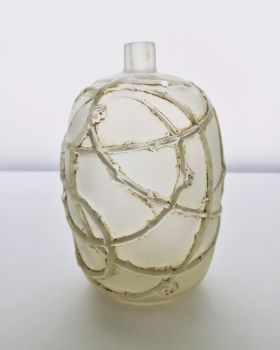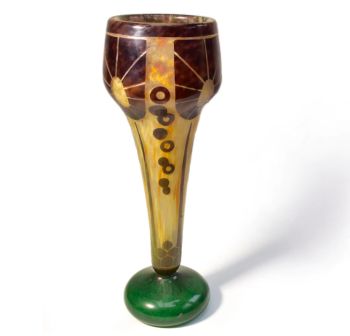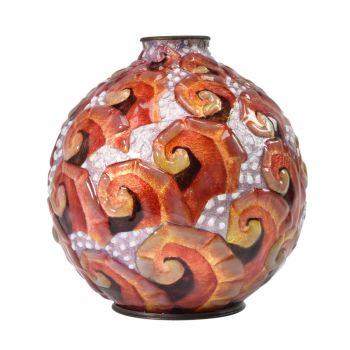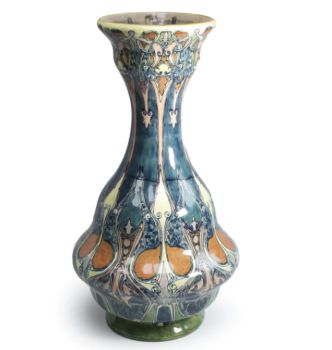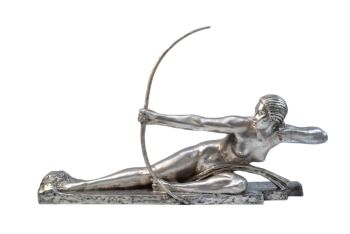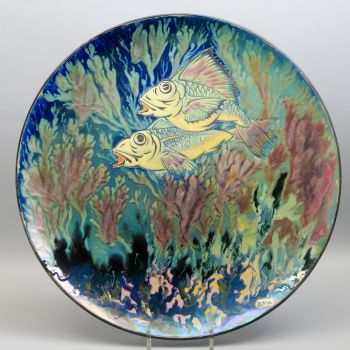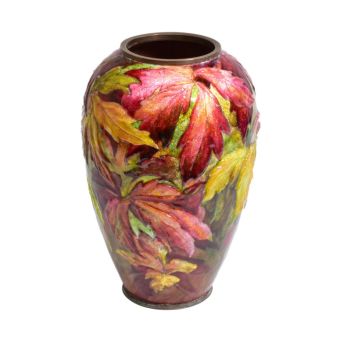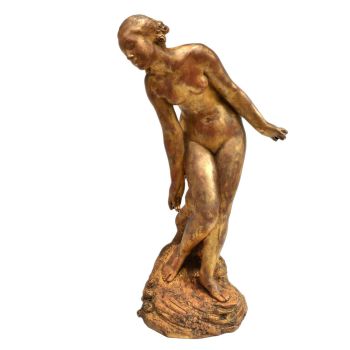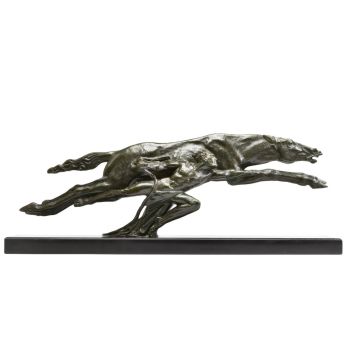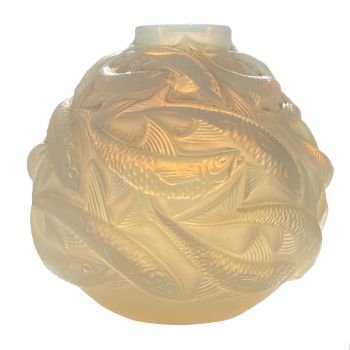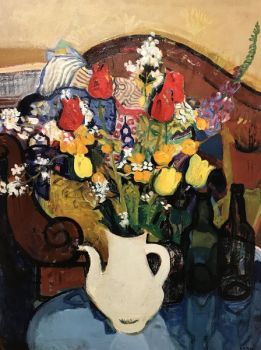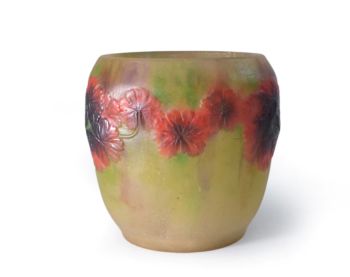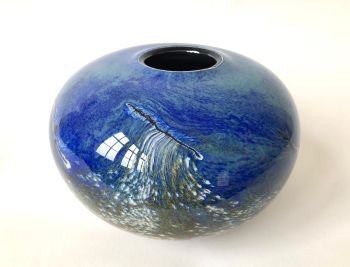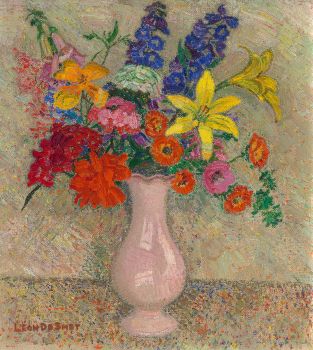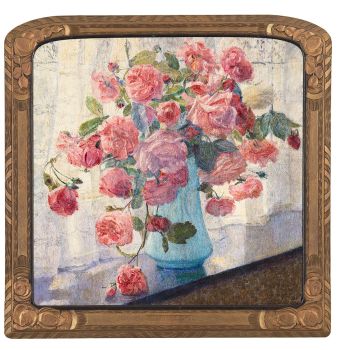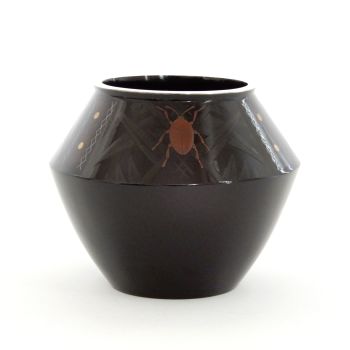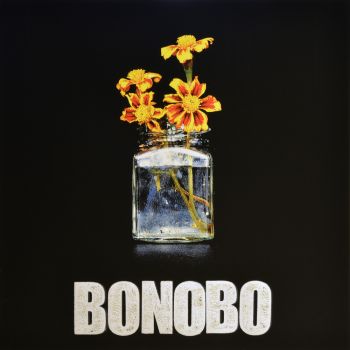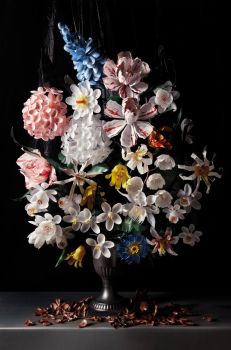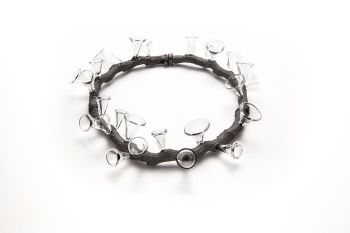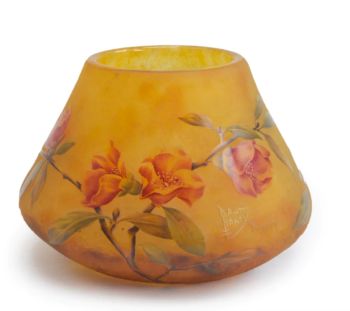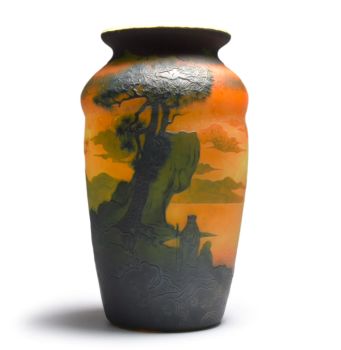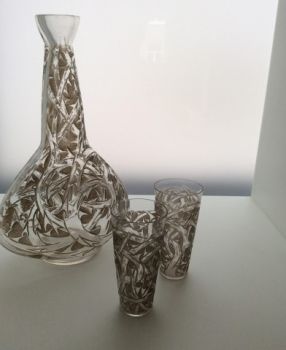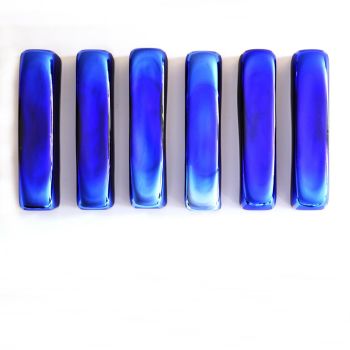Johann Loetz Witwe – “Zebra” decor, designed by Koloman Moser for E. Bakalowits – 1903 1903
Johann Loetz (Lötz) Witwe Klostermühle
Verre
8 cm, ø 7 cm
ConditionMint
Prix sur demande
Antiques Emporium
- Sur l'oeuvre d'artIntroducing a rare and captivating piece by Johann Loetz Witwe, featuring the exceptionally rare Zebra decor, designed by the renowned Koloman Moser in 1903 for E. Bakalowits, Vienna. This exquisite vase/cup is a true testament to the artistic brilliance and innovative craftsmanship of the early 20th century.
The Zebra decor is a distinctive and highly sought-after pattern, characterized by its striking black and white or contrasting dark and light bands that mimic the natural beauty of zebra stripes. The intricate glasswork and iridescent finish highlight the exceptional skill and artistry of Loetz glassmakers.
Koloman Moser, a pivotal figure in the Vienna Secession movement, designed the Zebra decor in 1903. Moser was instrumental in shaping modern design, blending artistic creativity with functional elegance. His work in 1903 was marked by groundbreaking designs that pushed the boundaries of traditional decorative arts.
This vase/cup is not just a decorative item but a piece of history. In 1903, Moser’s designs were revolutionizing interiors, moving towards modern, geometric styles that emphasized simplicity and elegance. His collaboration with Loetz and E. Bakalowits resulted in pieces that were both artistic and commercially successful, appealing to the discerning tastes of the time.
Koloman Moser (1868-1918) was one of the foremost designers of the Vienna Secession, a movement that sought to break away from the historical emphasis on traditional styles. In 1903, Moser was at the height of his career, creating innovative designs that were both functional and aesthetically pleasing. His work during this period included not only glassware but also furniture, textiles, and entire interior designs, showcasing his versatile talent and visionary approach.
This vase/cup, with its Zebra decor, is an excellent addition to any modern interior. Its bold pattern and elegant form make it a striking centerpiece, whether displayed on its own or as part of a collection. The piece reflects the transition towards modern design principles that Moser championed, making it both a timeless and contemporary artifact.
Dimensions:
Height: 88mm / 3.46”
Diameter top: 75mm / 2.95”
Diameter base: 65mm / 2.56″
Condition: Mint
Literature:
Hatje Cantz – Loetz Bohemian Glass 1880 – 1940 – Page 159, 160 & 316.
Prestel – Böhmisch Glas 1880 – 1940 Band 1 Werkmonographie – Page 172, 173, 178 & 340 . - Sur l'artiste
La verrerie Loetz a existé à Klostermuhle, en Autriche, pendant un peu plus de cent ans, à partir de 1840. Mais son apogée a eu lieu du vivant de Max Ritter Von Spaun, petit-fils du premier Johann Loetz qui avait fondé l'entreprise.
Von Spaun a repris l'entreprise en 1879 et l'a dirigée jusqu'en 1908, un an avant sa mort. Il est assisté d'Eduard Prochaska, son spécialiste technique, et ensemble ils inventent, conçoivent et produisent toute une série de merveilleux nouveaux types de verre, en déposant plusieurs brevets et en remportant des prix dans toutes les grandes expositions mondiales des années 1890 et des premières années de le nouveau siècle.
La société Loetz figurait parmi les leaders du design Art Nouveau et en particulier du verre d'art irisé. Le verre "Papillon", comme le vase de gauche, est parfois appelé aujourd'hui verre "à tache d'huile". Une autre coloration préférée de Loetz était le verre irisé avec des traînées tirées appelé verre « Phenomenon ».
Il y avait des vases irisés avec des rubans de couleurs métalliques enroulés sur la surface, et de nombreux motifs spectaculaires avec des traînées appliquées de belles couleurs, ou simplement retirés du corps du verre pour former des poignées ou une décoration.
Vers 1900, la société a commencé à collaborer avec des designers extérieurs et de grands artistes ont conçu des pièces pour Lotz, notamment Joseph Hofmann, Koloman Moser, Maria Kirchner et Hofstatter.
En 1908, Loetz a été repris par le fils de Max Von Spaun, également appelé Max, et bien qu'il ait connu des difficultés financières (faillite en 1911 et à nouveau en 1931), il y avait plusieurs grands designers dont le travail a été produit par Loetz au cours de ces années et à travers l'art période déco. Ceux-ci comprenaient Adolf Beckert et Michael Powolny.
Êtes-vous intéressé par l'achat de cette oeuvre?
Artwork details
Related artworks
Johann Loetz (Lötz) Witwe Klostermühle
Johann Loetz Witwe - Phänomen Genre 7773 – Orange1900 - 1910
Prix sur demandeAntiques Emporium
Johann Loetz (Lötz) Witwe Klostermühle
Johann Loetz Witwe – Jugendstil Cobalt Papillon vaas1900 - 1910
Prix sur demandeAntiques Emporium
1 - 4 / 7- 1 - 4 / 24
Artiste Inconnu
François-Théodore Legras – Tall “Fleurs de Pommier” apple blossoms vase1900 - 1909
Prix sur demandeAntiques Emporium
Johann Loetz (Lötz) Witwe Klostermühle
Johann Loetz Witwe - Phänomen Genre 7773 – Orange1900 - 1910
Prix sur demandeAntiques Emporium
Amalric Walter
Amalric Walter & Henri Bergé – Crabe plumier1920 - 1929
Prix sur demandeAntiques Emporium
Frères Daum
Daum Nancy – “Paysage Soleil Couchant” vase with two applied handles1900 - 1910
Prix sur demandeAntiques Emporium
1 - 4 / 24Johann Loetz (Lötz) Witwe Klostermühle
Johann Loetz Witwe – Jugendstil Cobalt Papillon vaas1900 - 1910
Prix sur demandeAntiques Emporium
Artiste Inconnu
Japanese art deco lacquervase with Scarab beetle motif1920 - 1950
Prix sur demandeDille Art
1 - 4 / 24Amalric Walter
Amalric Walter & Henri Bergé – Crabe plumier1920 - 1929
Prix sur demandeAntiques Emporium
1 - 4 / 24Frères Daum
Daum Nancy – “Paysage Soleil Couchant” vase with two applied handles1900 - 1910
Prix sur demandeAntiques Emporium
Gabriel Argy-Rousseau
Gabriël Argy-Rousseau – Crabes et Algues vase – 19201920 - 1929
Prix sur demandeAntiques Emporium
Artiste Inconnu
François-Théodore Legras – Tall “Fleurs de Pommier” apple blossoms vase1900 - 1909
Prix sur demandeAntiques Emporium
Johann Loetz (Lötz) Witwe Klostermühle
Johann Loetz Witwe – Jugendstil Cobalt Papillon vaas1900 - 1910
Prix sur demandeAntiques Emporium
1 - 4 / 12


















